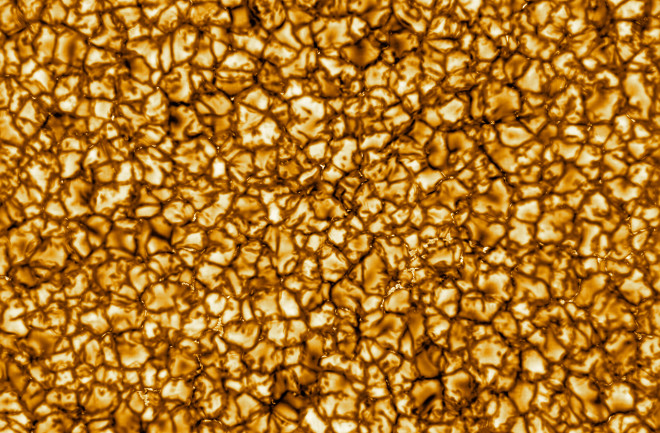A new solar telescope in Hawaii has taken its first photo and movie of the sun. The shots are the highest resolution views of our star yet, showing details on the sun’s surface as small as about 18 miles in size.
This Is the Most Detailed Picture of the Sun’s Surface Yet
Bubbling convection cells, each about the size of Texas, rise and fall across the sun's surface.
Jan 31, 2020 3:20 PMJan 31, 2020 3:29 PM

The new Daniel K. Inouye Solar Telescope's "first light" image is the most detailed look at the sun yet, letting scientists see details as small as 18 miles in size. (Credit: NSO/AURA/NSF)
Newsletter
Sign up for our email newsletter for the latest science news
0 free articles left
Want More? Get unlimited access for as low as $1.99/month
Stay Curious
Sign up for our weekly newsletter and unlock one more article for free.
View our Privacy Policy
Want more?
Keep reading for as low as $1.99!
Already a subscriber?
Find my Subscription
More From Discover
Stay Curious
Subscribe
To The Magazine
Save up to 40% off the cover price when you subscribe to Discover magazine.
Copyright © 2025 LabX Media Group
